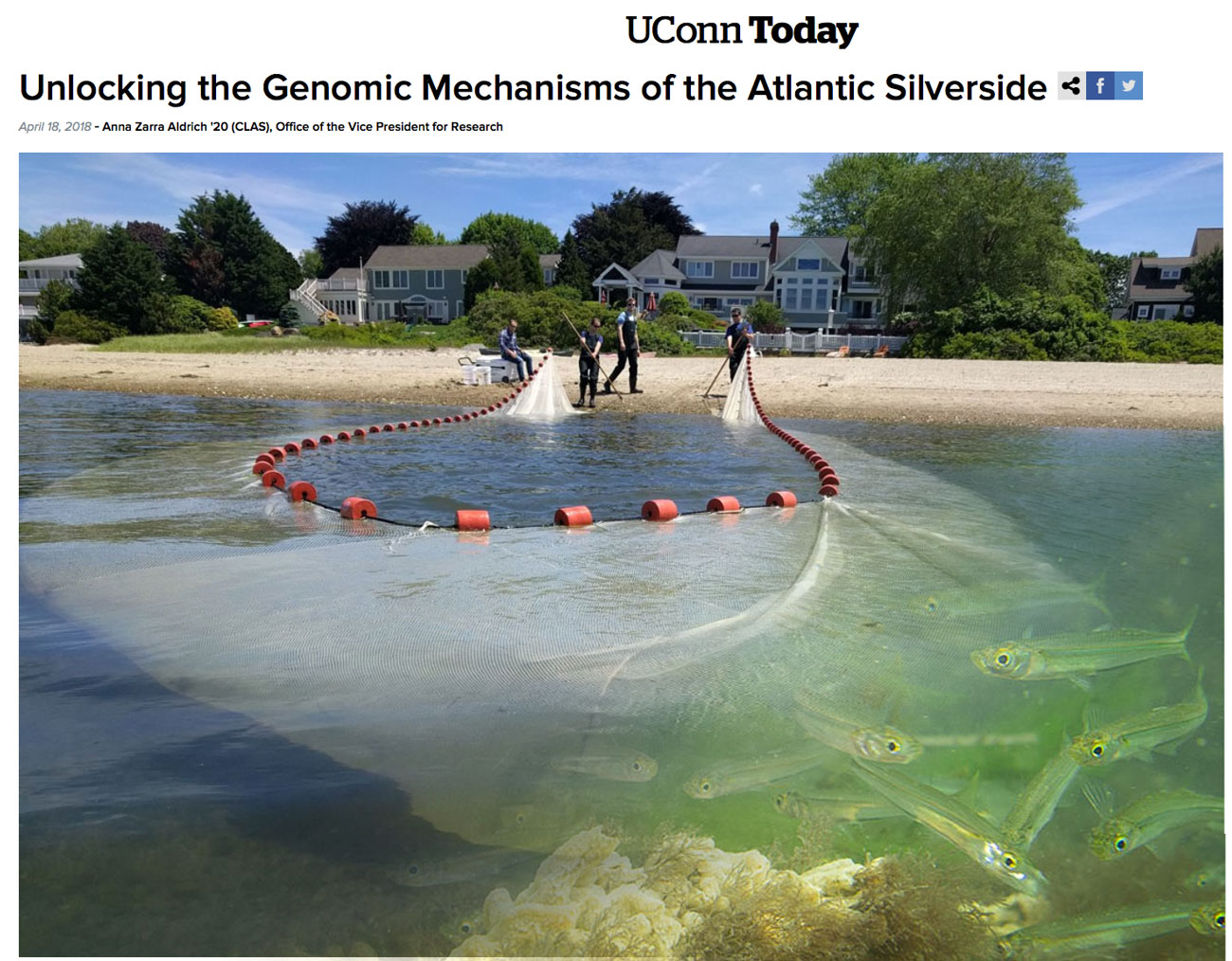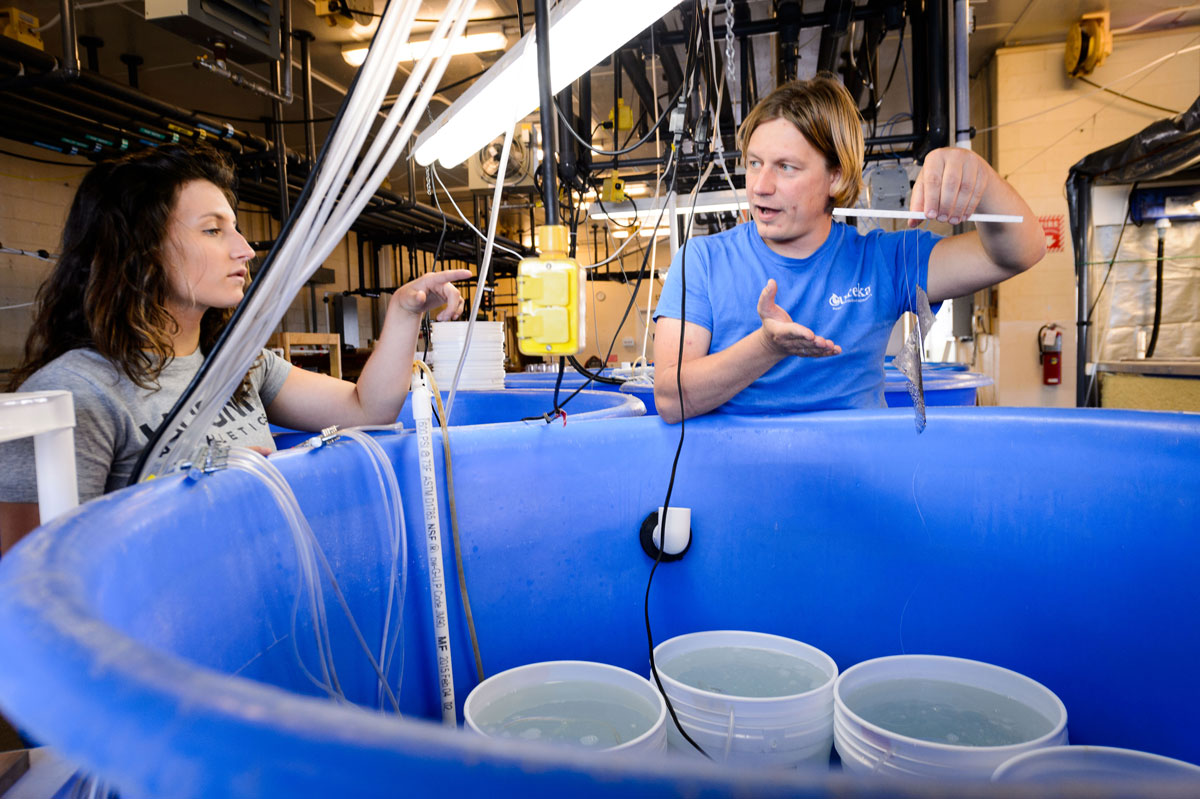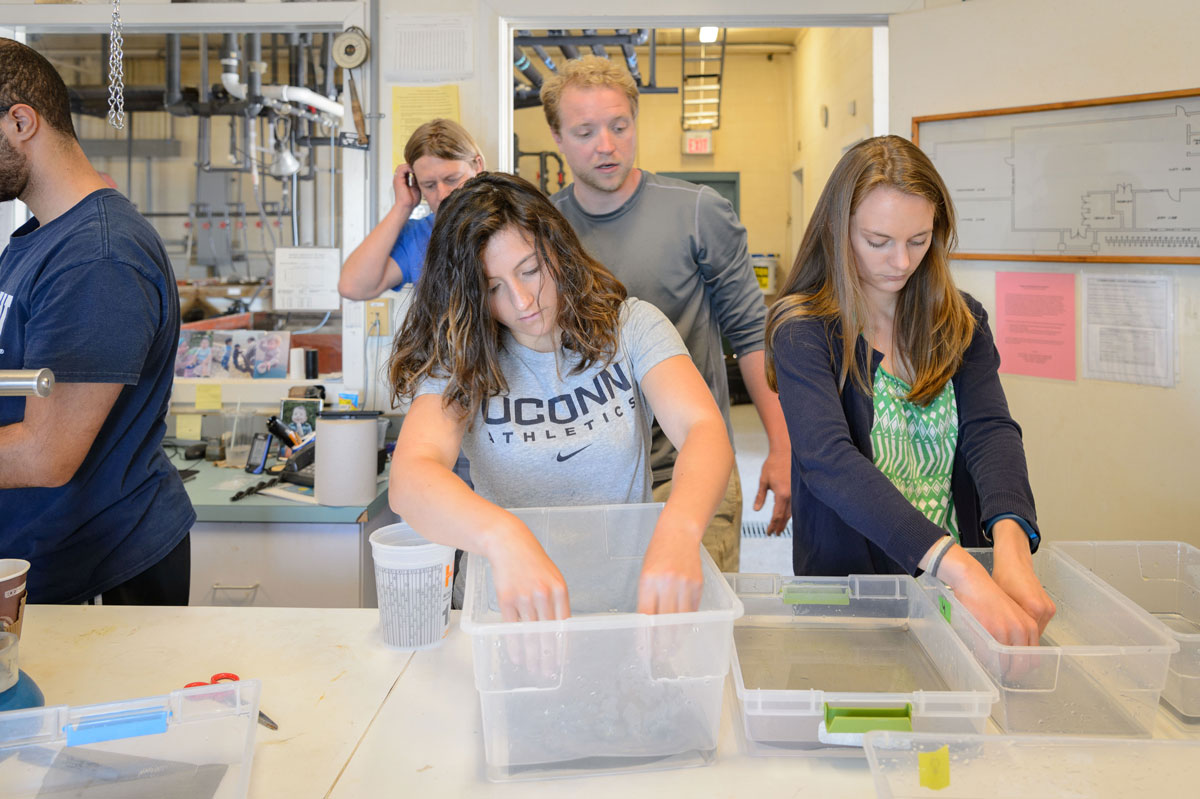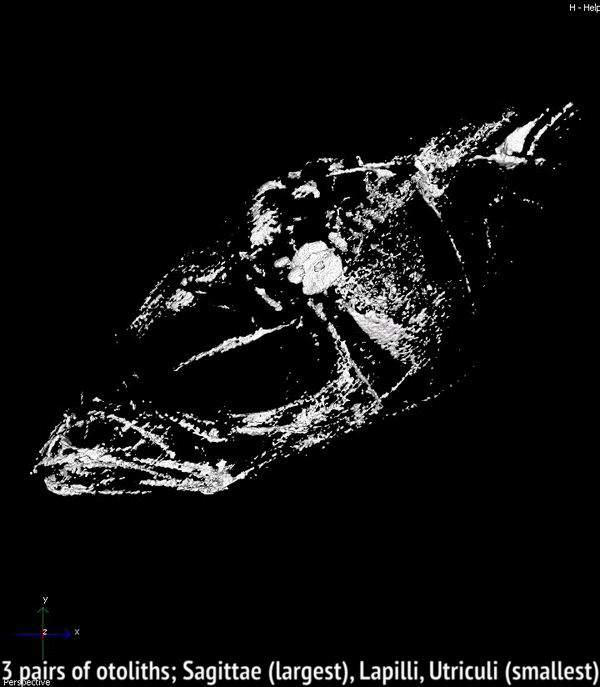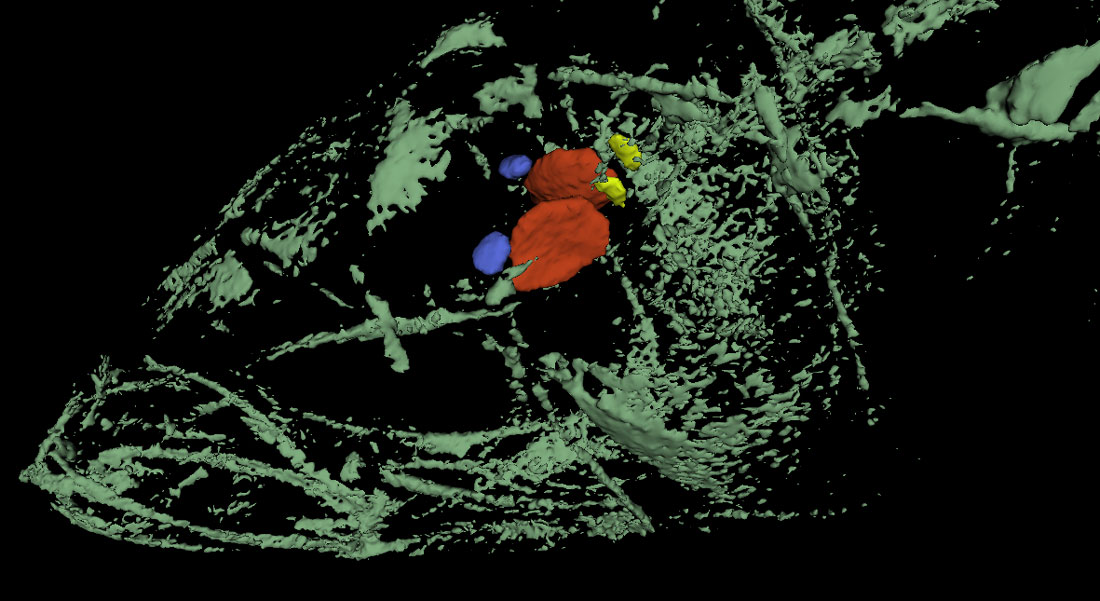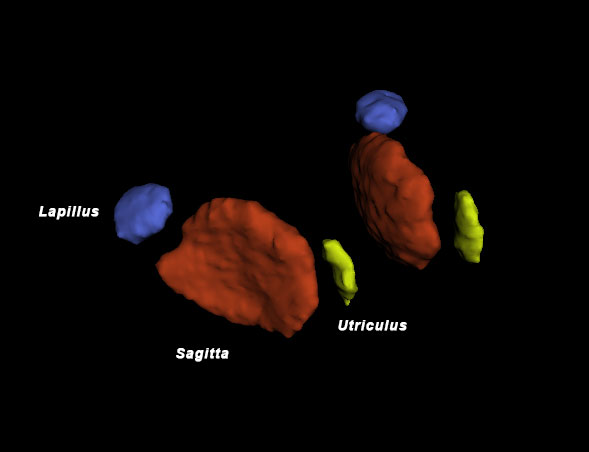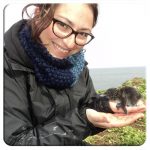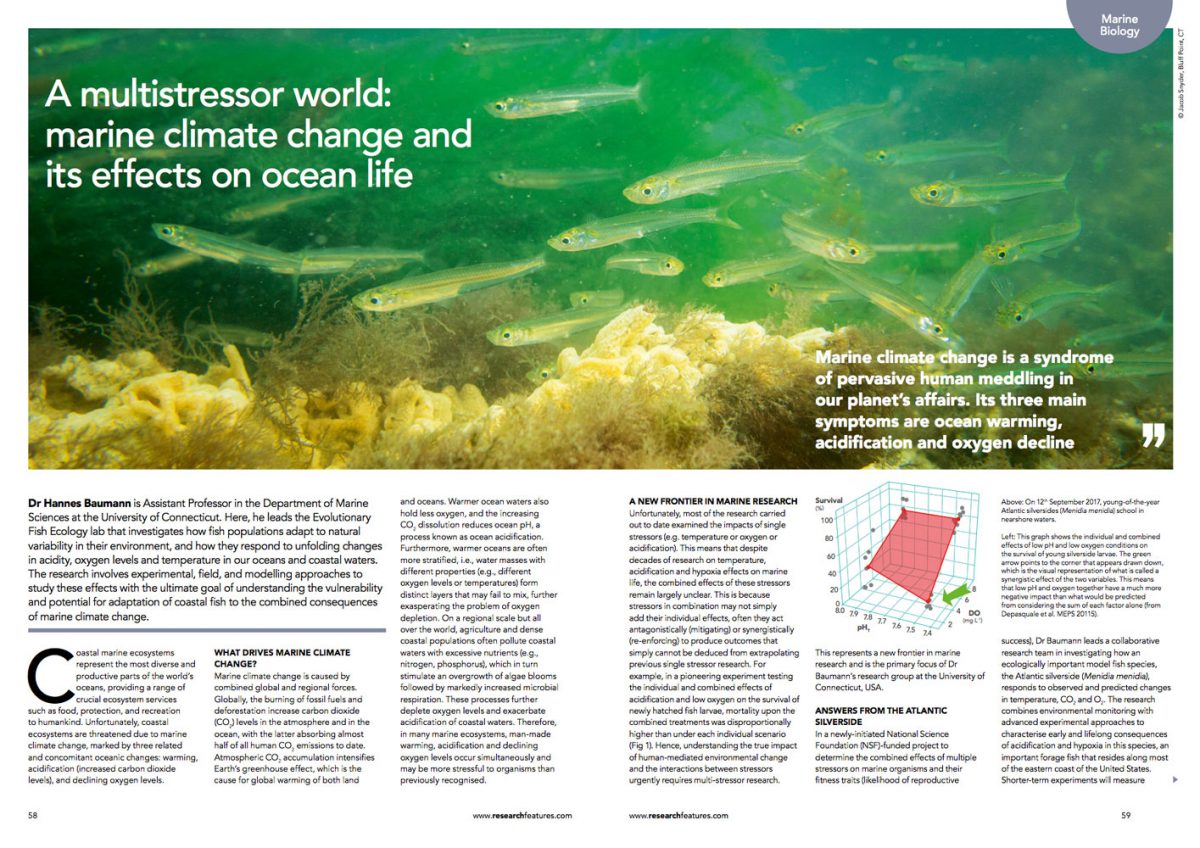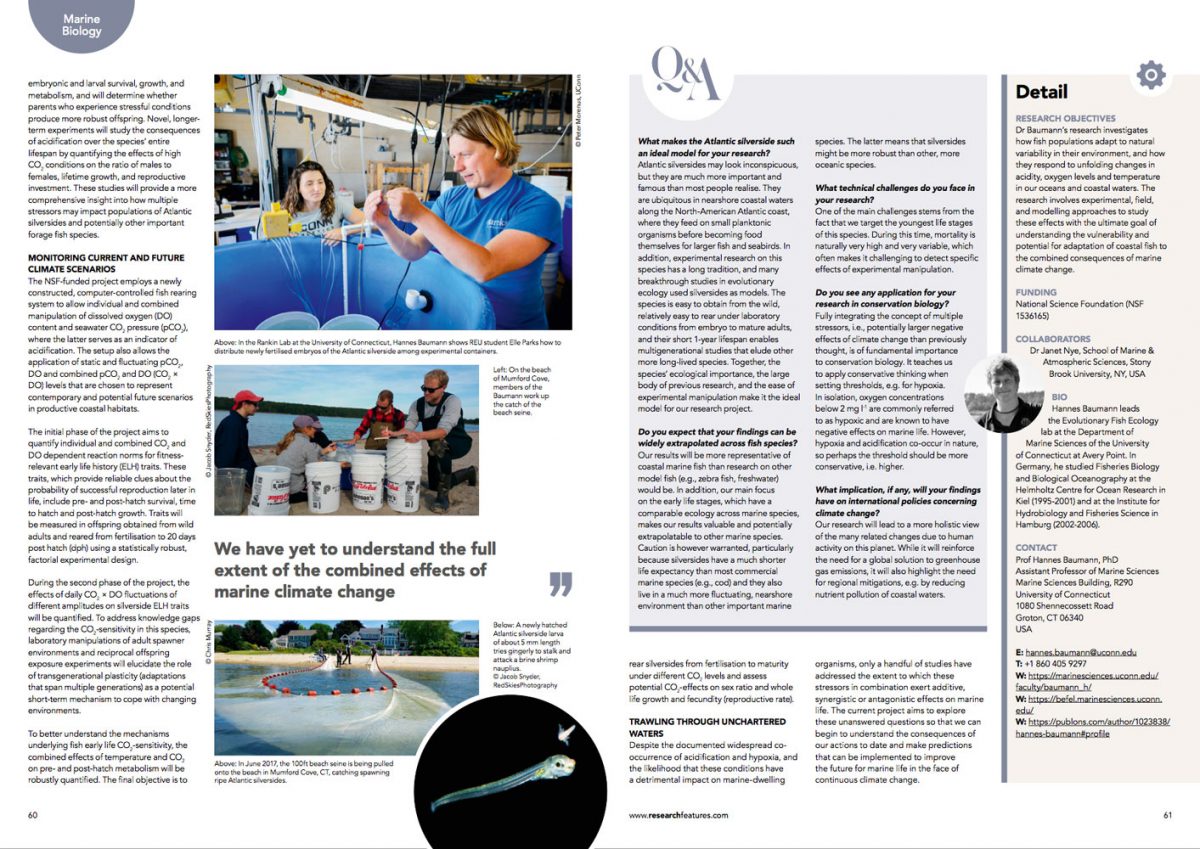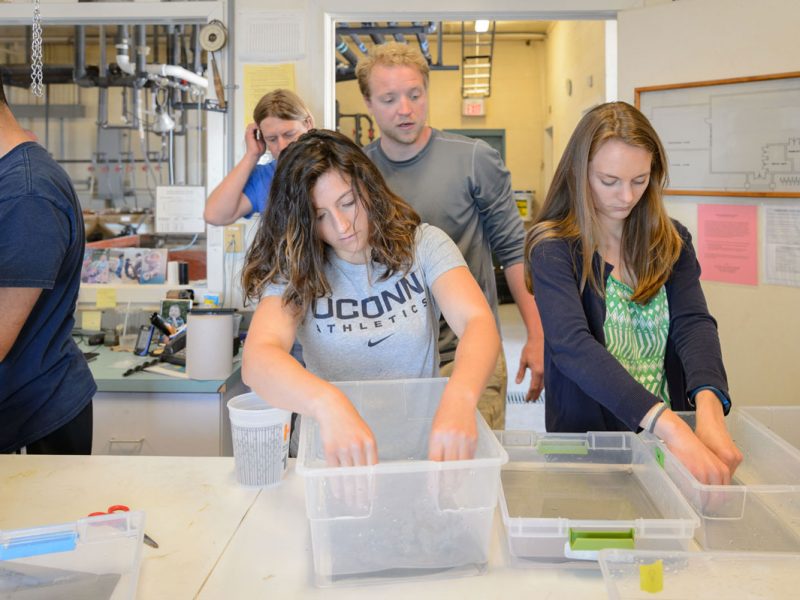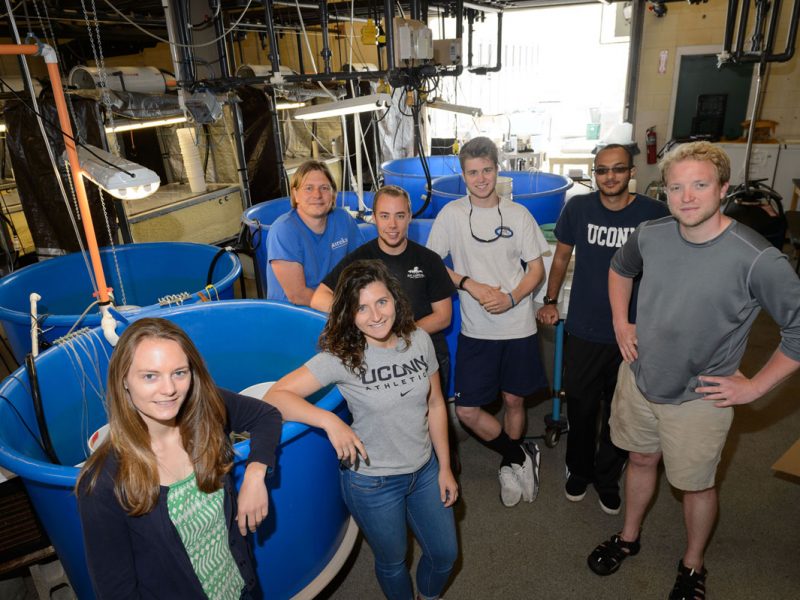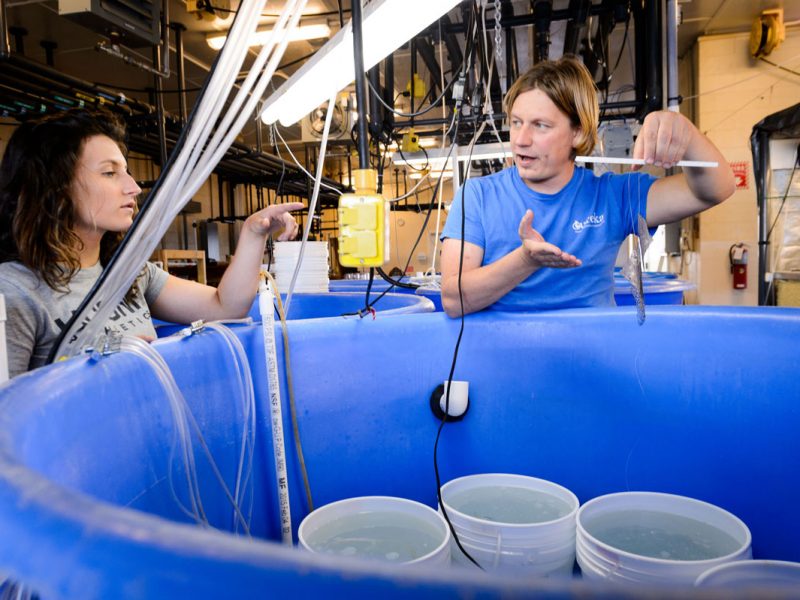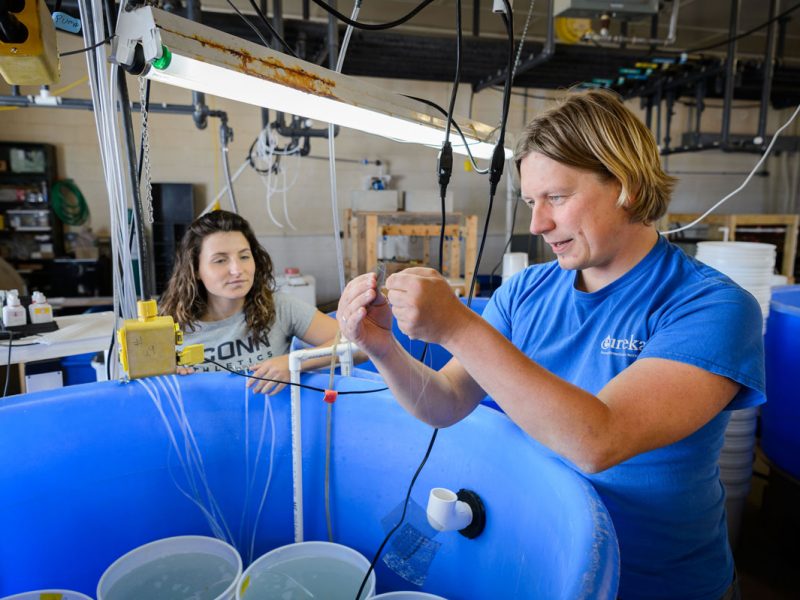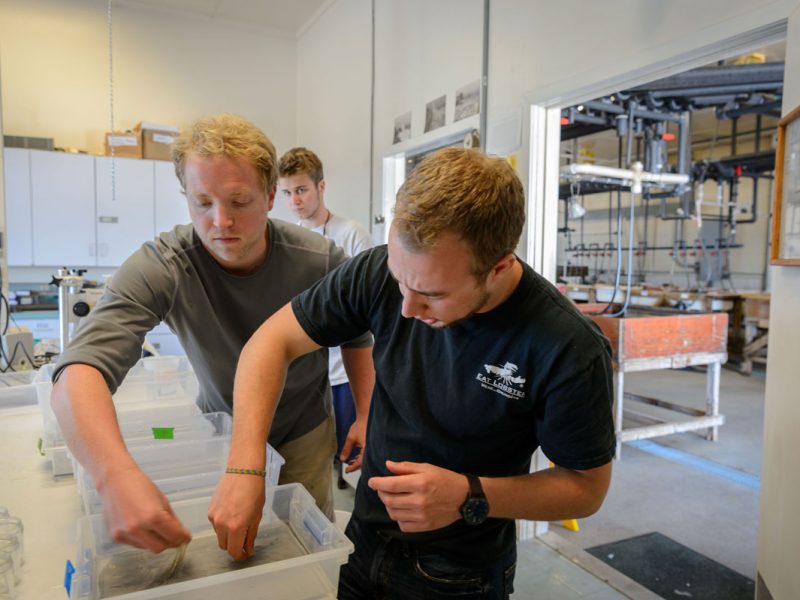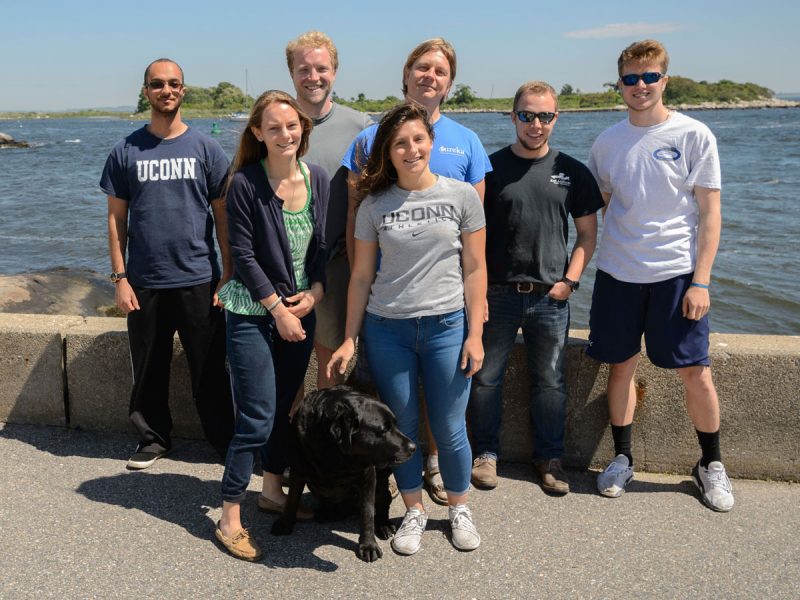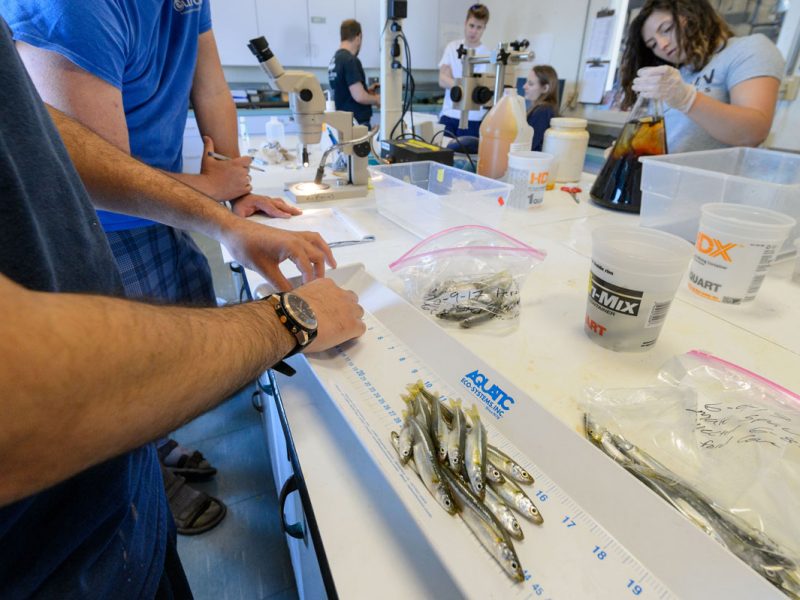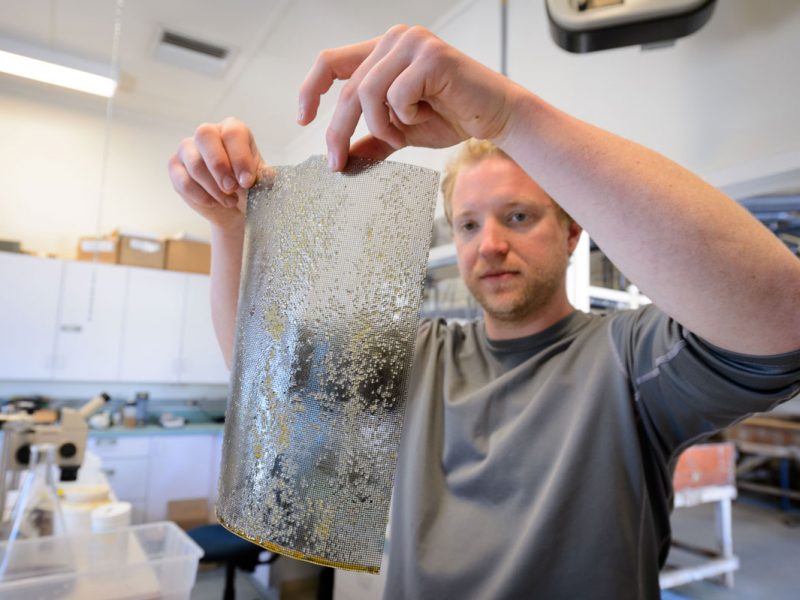On 18 May 2018, the Baumann lab teemed with activity. Maria Akopyan from Cornell University was busy phenotyping juvenile silversides for our Menidia Gene project. Mia and Mackenzie were busy working up field samples of silversides. And Hannes prepared adult silverside samples for later analyses.
Atlantic Silverside
[Funding] UConn Today announces new NSF-silverside project
Click on the link or the image blow to access the article in UConn Today …
[New publication] No CO2 effects on silverside starvation
- Baumann, H., Parks, E.M.*, and Murray, C.S.* (2018)
Starvation rates in larval and juvenile Atlantic silversides (Menidia menidia) are unaffected by high CO2 conditions.
Marine Biology 165:75-83
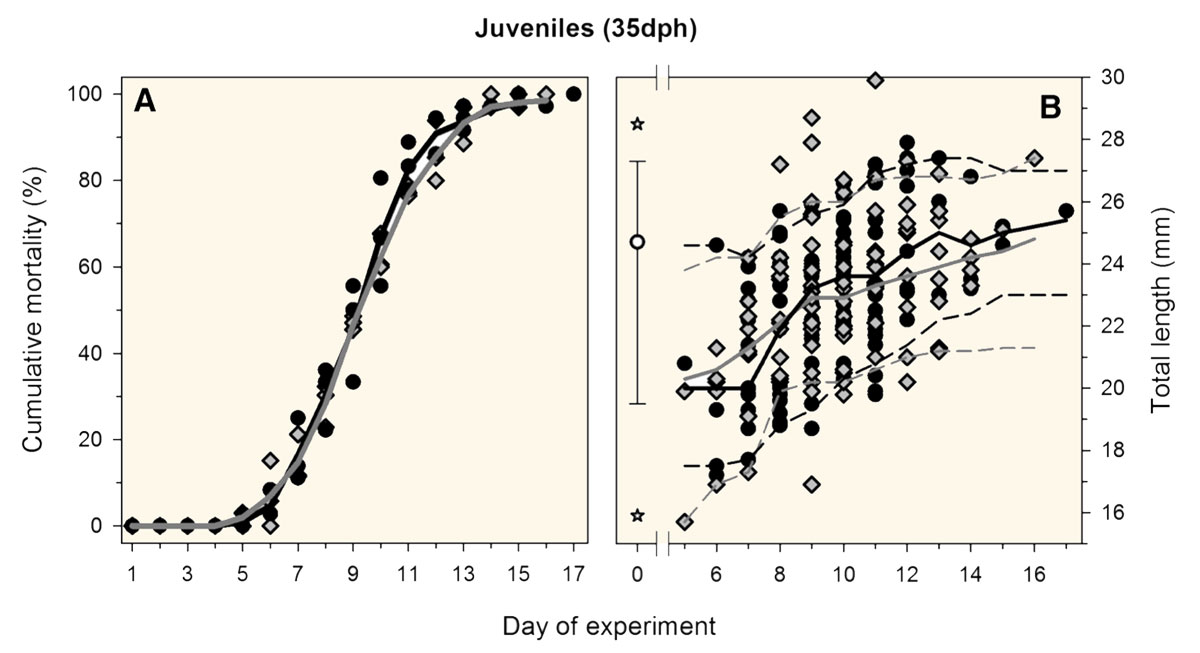
[Research news] Silversides in a CT scanner
26 March 2018. Today we got our first glimpse of an incredible new way of imaging the inner calcified structures of a fish body, particularly the ear bones (otoliths), of which every teleost fish has six, three on each side inside the skull. Otoliths are long known to fish ecologists for their properties to record and store information about a fish’s age, growth and habitat. With an adult Atlantic silverside, Hannes visited John Shepherd, facilities scientist and member of the Goldhamer lab at UConn, Storrs (Biology Physics Building), who showed us the use of a new, state-of-the-art micro CT-scanner (IVIS). Turns out, the system effortlessly imaged all six otoliths inside of the fish’s head. Later in the year, we will use the technique to image silversides reared at contrasting CO2 conditions to see whether they differ in their otolith size, volume, and structure. Thank you, John, for this truly inspiring demonstration!
[Research news] New NSF grant to study silverside genes!
We are overjoyed to announce that NSF is funding a new and collaborative research project to look at the genomic underpinning of local adaptation in the Atlantic silverside! Check out below for a first glimpse of the project website.

Oceans are large, open habitats, where it was previously believed that the lack of obvious barriers to dispersal would result in extensive mixing, thereby preventing organisms from adapting genetically to particular habitats. It has recently become clear, however, that many marine species are subdivided into multiple populations that have evolved to thrive best under contrasting local environmental conditions. Nevertheless, we still know very little about the genomic mechanisms that enable divergent adaptations in the face of ongoing intermixing.
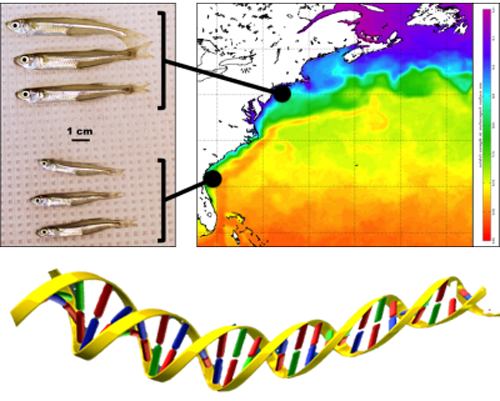
The project is organized into four interconnected components
[Research feature] Our multistressor NSF project in the spotlight
This research feature makes the case for multistressor research to a broad general audience and introduces our NSF project and its participants. Download the feature by clicking on the pictures or the link below.
[New publication] Mothers matter for the CO2 sensitivity of fish offspring
28 November 2017. The Journal of Experimental Marine Biology and Ecology just published the latest study by our group looking at differences in the CO2 sensitivity of Atlantic silverside offspring stemming from different mothers. Congratulations to Jacob Snyder for his first peer-reviewed publication.
Among the highlights of the study:
- Offspring produced by different females varied in their sensitivity to high CO2 conditions.
- Specific fatty acids in eggs were correlated to the log-transformed CO2 response ratio of embryo survival and hatch length.
- Maternal provisioning might be an additional determinant of CO2 sensitivity in fish early life stages.
Citation:
Snyder, J.T.*, Murray, C.S.*, and Baumann, H. (2018)
Potential for maternal effects on offspring CO2 sensitivities in the Atlantic silverside (Menidia menidia).
Journal of Experimental Marine Biology and Ecology 499:1-8
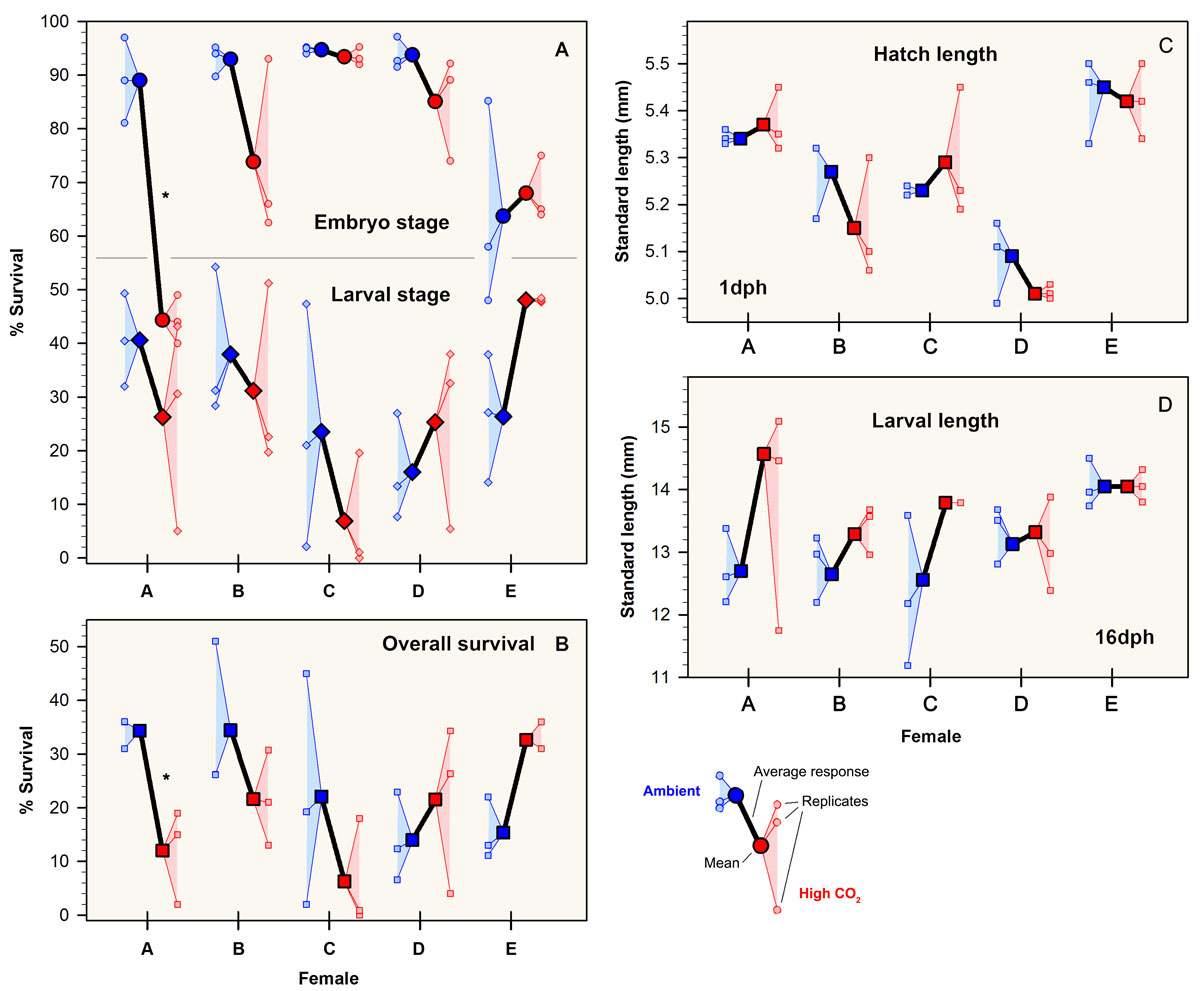
[Lab news] Baumann lab attends the CERF conference in Providence, RI
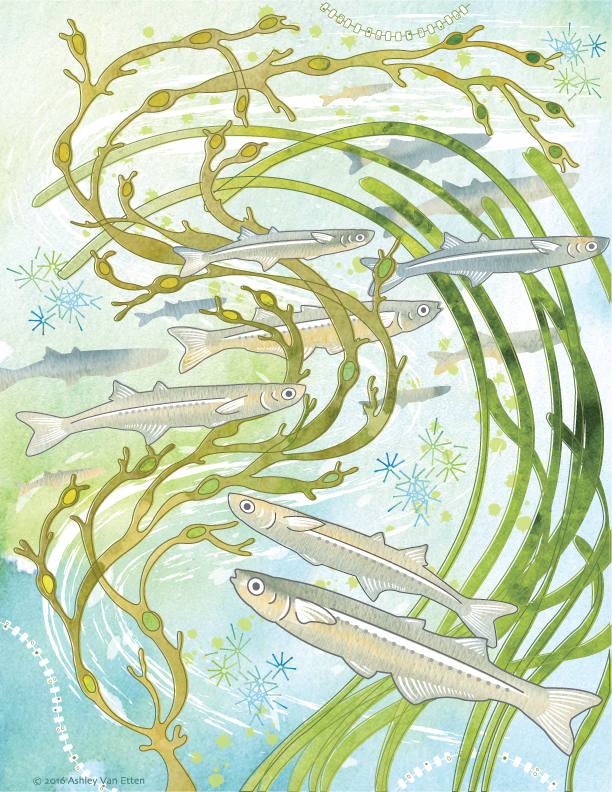
Together with Steve Litvin (Monterey Bay Aquarium) Hannes convened a theme session titled “Physiological ecology in the Anthropocene: linking the laboratory and field” and talked about our recently published paper on pH and oxygen fluctuations in nearshore coastal environments. Jake presented his Master thesis research on the newly digitized long-term time series of Project Oceanology, and Julie talked about the first aspect of her ongoing research on silverside otoliths and inferred patterns of growth and temperature-dependent sex determination. Well done, all!
- Baumann H. and Smith, E.M. 2017. Quantifying the covariance of pH and oxygen conditions across the diversity of US nearshore habitats.
- Pringle, J.W. and Baumann H. 2017. Sex-specific growth and mortality patterns in juvenile Atlantic silversides (Menidia menidia) from Connecticut waters.
- DeMayo, J.A., Park, G., Norton, L., Huffman, W., Finiguerra, M., Baumann H., and Dam, H.G. 2017. Combined effects of warming and acidification on life-history traits of the calanoid copepod Acartia tonsa.
- Snyder, J.T. and Baumann H. 2017. A newly digitized 45-year dataset of environmental and biological observations from Long Island Sound.
[Lab news] Measuring juvenile silversides. Live.
10 October 2017. Today, Chris, Emma, and Julie measured over 400 juvenile Atlantic silversides for their length and weight. This time, however, we did not euthanize the fish before, but successfully measured them while still alive, only a little drowsy from the mild anesthetic we administered before.
Click on the video below to have a look for yourself.
Congratulations all, for a job well done!
[Lab news] Group effort – starting new silverside experiments in June 2017
It’s the beginning of June, and in the Baumann lab that means: high time for experimental research on the Atlantic Silverside, the famous forage fish and important model species! This year, we have several major objectives; our NSF-sponsored research examines the sensitivity of offspring to the individual and combined effects of high CO2 and low oxygen (Chris Murray), while in collaboration with our colleagues from Cornell University we rear several families for genetic and transcriptomic studies. Elle Parks, our REU student just started her work on the effects of CO2 and temperature on the starvation resistance of silverside larvae. As always, the days when new experiments start are a group effort, where everybody including many volunteers help. Thanks to Peter Morenus (UConn) for the coming down for documenting the activities!
This story is also featured on UConn Today.
